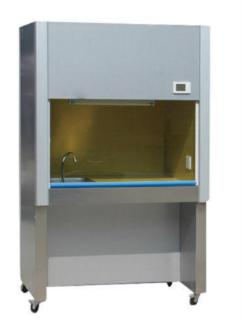A fume hood is a critical component of laboratory safety, providing researchers with a controlled environment to handle potentially hazardous compounds. These specialized ventilation devices are designed to manage and eliminate toxic fumes, gases, vapors, and particulate matter produced during laboratory processes. In this article, we'll delve into the purpose of a fume hood, exploring its versatility and significance in ensuring a safe laboratory environment.

Purpose of a Fume Hood:
Protection of Personnel: The primary purpose of a fume hood is to safeguard laboratory staff from exposure to harmful substances. Fumes and vapors produced by chemicals or volatile substances can pose significant health risks if inhaled or come into contact with the skin or eyes. Fume hoods create a physical barrier between workers and hazardous materials, minimizing the risk of direct exposure and ensuring the safety of laboratory personnel.
Containment of Hazardous Substances: Fume hoods are essential for containing hazardous pollutants within the laboratory environment. They provide a safe workspace for conducting chemical reactions, sample preparations, and other laboratory activities involving volatile or caustic compounds. By utilizing a clear sash or sliding door, fume hoods prevent the escape of fumes, gases, or particulate matter, ensuring containment and safety.
Ventilation and Exhaust: Fume hoods utilize a ventilation system to maintain controlled airflow within the workspace. Air from the laboratory is drawn into the hood, capturing and trapping hazardous gases and chemicals. The trapped fumes are then safely expelled to the outside environment through a duct system by the ventilation system. This continuous airflow minimizes the accumulation of harmful substances in the workspace, promoting a safe working environment for laboratory personnel.
Environmental Protection: In addition to protecting workers, fume hoods play a crucial role in environmental protection. The exhaust system of a fume hood ensures that harmful vapors and substances are safely removed from the laboratory and released outside the building. This helps maintain air quality and reduces the risk of contamination or pollution by preventing the release of hazardous compounds into the environment.
Compliance with Safety Regulations: Fume hoods assist laboratories in meeting regulatory requirements and standards for occupational health and safety, environmental protection, and laboratory operations. Regulatory authorities and organizations have specific criteria and rules for fume hood design, installation, operation, and maintenance. Compliance with these regulations ensures that laboratories maintain a safe working environment and adhere to best practices when handling dangerous compounds.

Applications and Versatility of a Fume Hood:
Chemical Handling and Analysis: Fume hoods are commonly used for chemical handling and analysis in laboratories. They provide a safe environment for working with volatile, poisonous, or caustic substances, ensuring that reagents, solvents, acids, bases, and other chemical compounds are handled safely.
Biological Safety: In biosafety applications, fume hoods with adequate filters or ventilation systems are utilized. These hoods provide a controlled environment for working with infectious materials, biological agents, or genetically modified organisms (GMOs), safeguarding researchers from biological hazards.
Pharmaceuticals and Drug Development: Fume hoods play a crucial role in pharmaceutical research and development, providing a secure environment for working with active pharmaceutical ingredients (APIs), powerful chemicals, and pharmaceutical formulations.
Industrial Research and Development: Fume hoods are utilized in industrial research and development settings across various industries, including chemical manufacture, materials science, and product development. They enable scientists to work safely with hazardous materials, conduct experiments, and optimize processes.
Research Laboratories: Fume hoods are essential in research laboratories across scientific disciplines such as chemistry, biochemistry, molecular biology, and environmental science. They offer a flexible and adaptable workspace for conducting experiments, handling samples, and operating with hazardous substances.
Education and Training: In educational institutions, fume hoods are used for teaching and training purposes during laboratory experiments and demonstrations. They ensure the safety of students and teachers, allowing hands-on experience with chemicals and hazardous materials while adhering to safety protocols.
Specialty Applications: Fume hoods find applications in various specialty fields and research areas, providing a safe environment for conducting specialized experiments and handling specific types of hazardous substances.
In summary, fume hoods are indispensable tools in laboratory safety, offering protection for personnel, containment of hazardous substances, ventilation, environmental protection, and regulatory compliance. Their versatility and significance extend across a wide range of applications, ensuring a safe and secure working environment in laboratories worldwide.